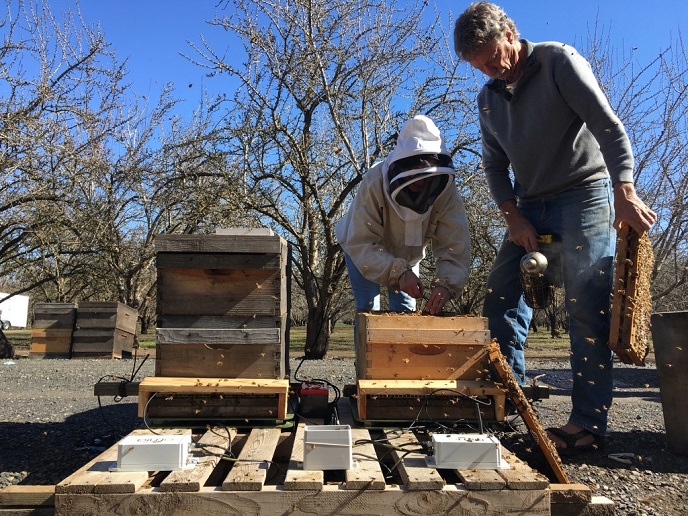Novel sensors monitor environmental threats to bees
Bees are in trouble. Since the early 1990s, Europe has seen an average population decline of 17-20 % per year, sometimes substantially more in certain areas. Today, about 10 % of Europe’s 2 000 bee species are endangered. Since three quarters of crop plants depend on bee pollination, the decline in bee numbers threatens food production. The decline is most serious in countries with industrialised agriculture, suggesting possible causes. A combination of invasive species, habitat loss and use of insecticides explains most of the losses. Thus, the EU banned outdoor use of the neonicotinoid(opens in new window) family of insecticides, and established the ‘EU Pollinators Initiative’(opens in new window). Nevertheless, much remains unknown.
In-hive and field sensors
Although commercial environmental sensors for monitoring beehives are available, they come with several key deficiencies. Therefore, the EU funded IoBee(opens in new window) project developed two superior sensors. One is placed in beehives, the other in nearby fields. Together, the sensors monitor environmental changes and provide early warnings of any threat. Project researchers also developed a wireless sensor network and supporting applications. The beehive sensor is installed at the hive entrance, and counts bees entering and leaving the hive in real time. “The beekeeper can then evaluate the strength of the foraging force, determine mortality rates in the field, and identify deviations in flight duration and nectar availability,” explains project coordinator Dr João Encarnação. The sensor can also identify types of bees and hive pests. One way the sensor does so is via a technique called light extinction, which measures the size of an insect’s shadow. The sensor also measures light scattering in various colour bands, identifying species by colouration. A second optoelectronic sensor counts and identifies insects flying outside the hive. “As insects fly through the sensor field, the sensor automatically identifies their flight pattern and matches it with species in the database. So insects can be efficiently identified without need for trapping and manual counting,” adds Encarnação. The sensor also measures pollinator density, which is an important parameter for agricultural production and ecosystem monitoring. No other sensor system can provide this information. The sensors can be set up with an associated weather and air-quality station. All units send data to a cloud server via a cellular network. The team developed algorithms for automated data processing and software for visual presentation.
Environmental alerts and field trials
The collated information can be used to alert authorities to environmental threats or pest outbreaks. This allows much more rapid and effective interventions than would have been possible previously. Researchers conducted field trials in five European countries, plus the United States. Laboratory and field testing confirmed sensor identifications as being 95 % accurate. This will halve the costs of inspection and surveillance. Public and private customers, and authorities, gave very positive feedback. The team has taken initial orders to equip 200 beehives, in three European and three other countries. These orders will be filled during autumn 2020. Next, the team plans to equip 5 000 beehives during 2021. IoBee’s new sensors provide better information about the threats affecting bees. This will help improve European environmental standards, and reduce the usage of pesticides.







